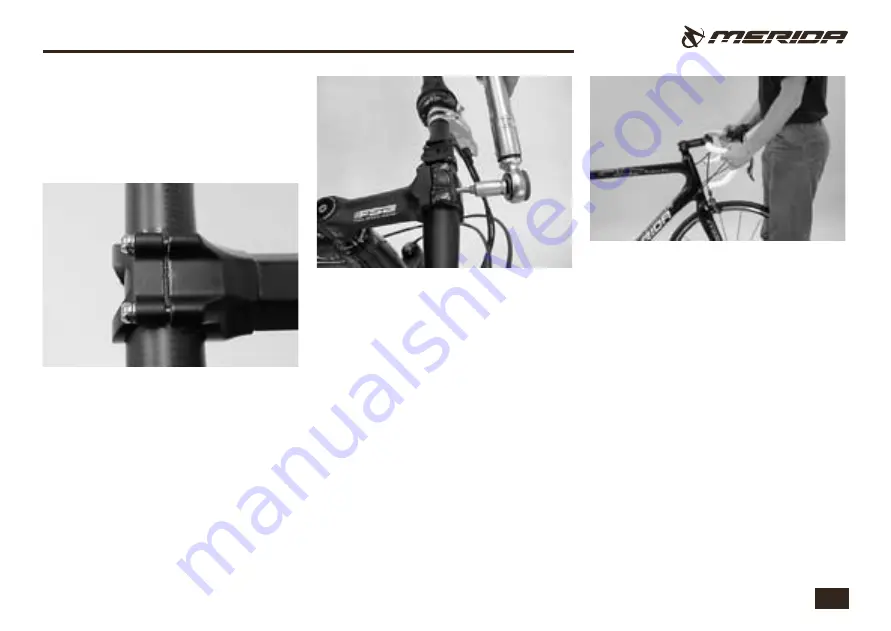
5. Screw in the bolts which have a greased
thread and head by a few turns with your
fingers. Screw in all bolts by hand until
they are snug. The clamping slot between
stem cap and stem body must be even with
the same gap at either end.
Check whether the handlebar is firmly seated
in the stem by trying to turn the handlebar
downwards. Furthermore, check whether you
can twist the handlebar/stem unit against
the fork. Take the front wheel between your
knees and try to turn the handlebar against
the wheel.
If the clamping of the handlebar or stem is still
not tight, increase the torque until you reach
the upper limit of the torque setting given by
the stem manufacturer.
With regard to the necessary torques, see
chapter 29.
“Recommended torques for
bolted connections”
. If the torques for two
components to be combined differ, make it a
rule to tighten them to the lower torque.
Check the firm seat once again, as described
above. If the clamping of the handlebar into
the stem or the stem onto the fork stem is not
properly tight, there is a dimensional compat-
ibility problem. In this case the stem should be
replaced by a compatible one.
8. Carbon handlebars and stems
6. Tighten the bolts of both clamping areas
alternately and gradually with a torque
wrench until you reach the lower limit of
the recommended torque. In the case of
stems with a 4-bolt front clamp, tighten the
bolts diagonally.




























